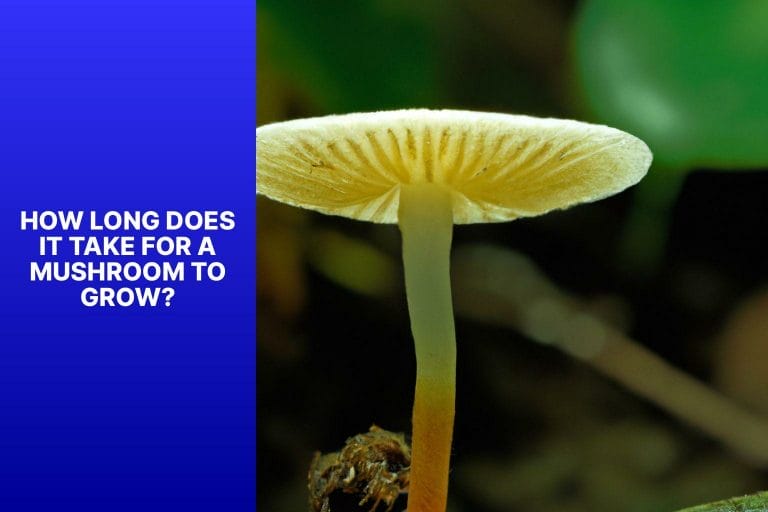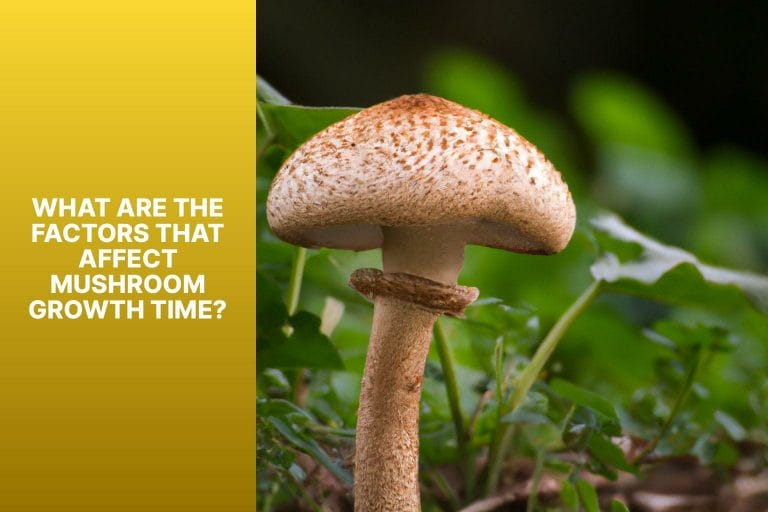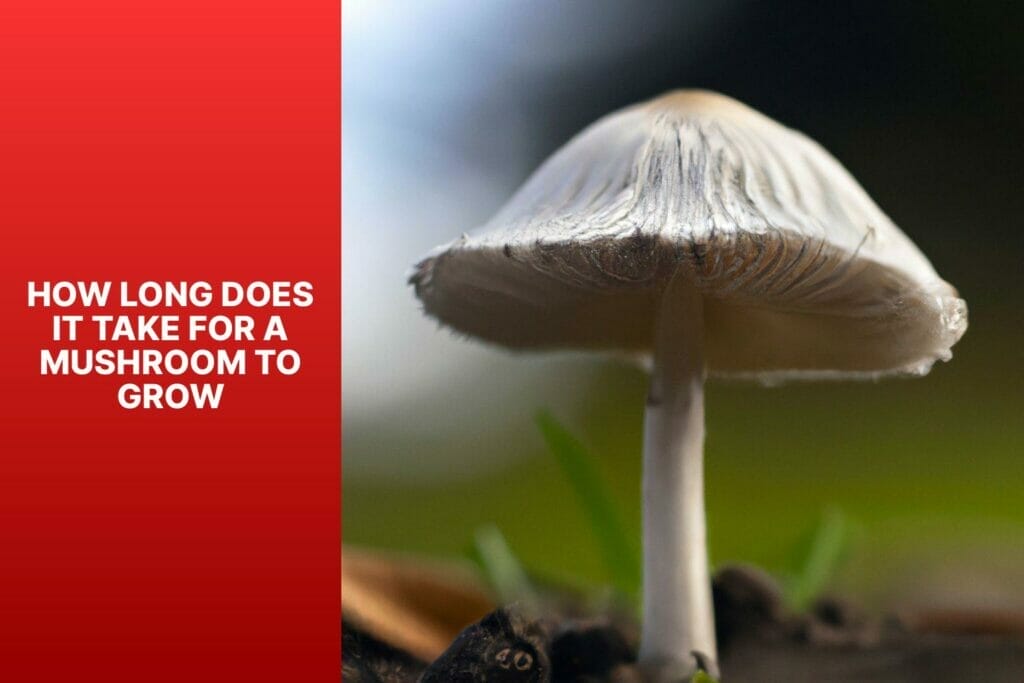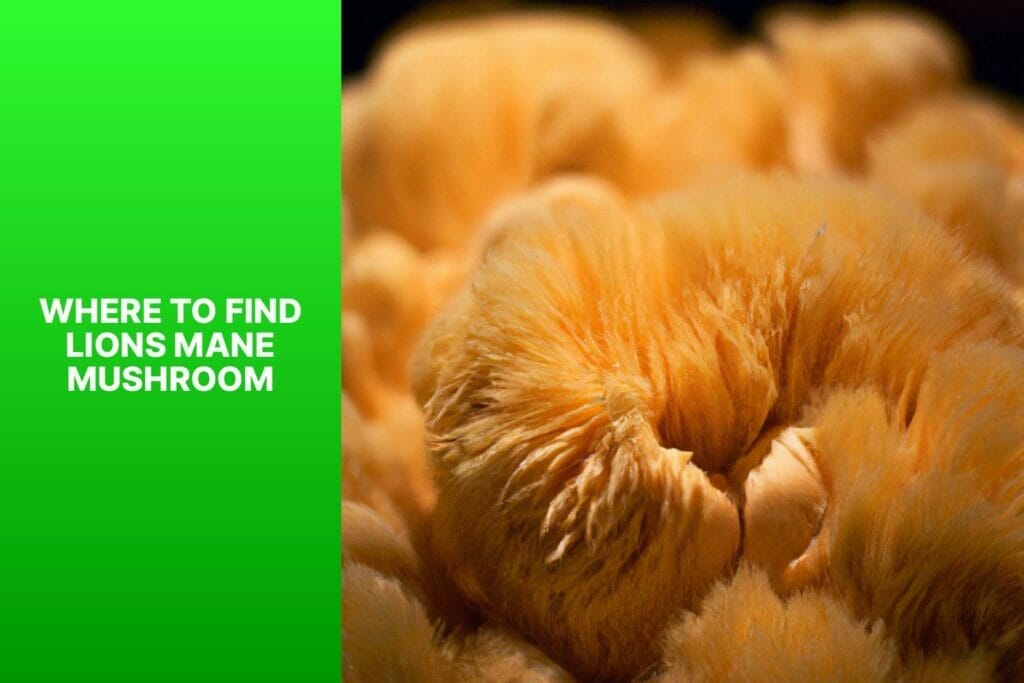Growing mushrooms can be a fascinating and rewarding experience, whether you’re a seasoned cultivator or starting. One common question arises:
How long does it take for a mushroom to grow?
This article aims to shed light on the growth timeline of mushrooms and the various factors that can influence it.
Several factors can affect the growth time of mushrooms, including the mushroom variety, environmental conditions, and the growing method used. Different types of mushrooms have varying growth rates due to their unique characteristics and requirements.
Understanding the stages of mushroom growth is also crucial. The growth process typically consists of three stages: spawn Run, pinning, and fruiting. Each stage has distinct characteristics and durations.
Let’s look at the growth timelines for some popular mushroom varieties to give you a general idea of the time it takes to grow.
1. White Button Mushrooms: White button mushrooms are commonly found in grocery stores and have a relatively short growth time of around 2-3 weeks from spawn to harvest.
2. Shiitake Mushrooms: Shiitake mushrooms, known for their savory and earthy flavor, have a longer growth time than white button mushrooms. It takes approximately 4-6 weeks to grow from spawn to harvest.
3. Oyster Mushrooms: They are popular for their delicate texture and mild taste. They have a relatively fast growth time, typically taking 2-3 weeks to mature.
If you’re looking to expedite the mushroom growth process, there are several tips you can follow. Maintaining optimal temperature and humidity levels, providing proper ventilation, and using high-quality spawn and substrate are key factors for faster mushroom growth.
By understanding the factors that affect mushroom growth time and implementing appropriate techniques, you can successfully cultivate mushrooms and enjoy the fresh rewards of your efforts promptly.
Key takeaway:
- Mushrooms have varying growth times: The time it takes for mushrooms to grow can vary depending on the type, with white button mushrooms typically taking around 3-4 weeks, shiitake mushrooms taking 4-6 weeks, and oyster mushrooms taking 1-2 weeks.
- Factors influencing mushroom growth time: The growth time of mushrooms is affected by factors such as mushroom variety, environmental conditions (including temperature, humidity, and ventilation), and the chosen growing method.
- Tips for faster mushroom growth: To promote faster mushroom growth, it is important to maintain optimal temperature and humidity levels, provide proper ventilation, and use quality spawn and substrate.
How Long Does It Take for a Mushroom to Grow?

Photo Credits: True2Mushrooms.Com by William Martin
The time it takes for a mushroom to grow depends on factors like the mushroom species, environmental conditions, and cultivation methods.
How Long Does It Take for a Mushroom to Grow? Here are the steps involved:
- Spawn inoculation: Prepare the mushroom spawn, which is the vegetative mycelium. This can take a few days to a few weeks.
- Substrate preparation: Prepare the growing medium, which provides the necessary nutrients. This can involve pasteurizing or sterilizing the substrate, taking a few hours or a day.
- Spawn colonization: Introduce mushroom spawn and let it colonize the substrate. Depending on the mushroom species, this can take a few days to several weeks.
- Pinhead formation: Small pinheads or primordia will form within a week or two after colonization.
- Fruit body maturation: The pinheads will grow into mature mushrooms over days to weeks, depending on the species.
- Harvesting: Harvest mature mushrooms when they reach the desired size and maturity. Preferences vary.
They maintain proper environmental conditions (temperature, humidity, and light levels) for optimal growth. Different mushroom species have different growth requirements, so research and follow specific guidelines.
What Are the Factors that Affect Mushroom Growth Time?

Photo Credits: True2Mushrooms.Com by Jeremy Moore
Did you know that the growth time of a mushroom can vary depending on many factors? In this section, we’ll dive into the different elements that impact the duration of mushroom growth.
From the type of mushroom variety to the environmental conditions and the growing method employed, we’ll uncover the key determinants of growth time. So, buckle up and get ready to explore the fascinating world of mushroom cultivation and how various factors influence their development.
1. Mushroom Variety
Different mushroom varieties have varying growth rates. Here is a comparison of the growth time for three common mushroom varieties:
| Mushroom Variety | Growth Time (in days) |
|---|---|
| White Button | 17-21 |
| Shiitake | 14-21 |
| Oyster | 10-14 |
Oyster mushrooms have the fastest growth time, taking only 10-14 days to mature. Shiitake mushrooms take a bit longer, with a growth time of 14-21 days. White Button mushrooms have the longest growth time, taking 17-21 days to grow fully.
If you want quicker results, choose Oyster mushrooms. You can choose a different flavor profile for Shiitake or White Button mushrooms.
Each mushroom variety has its unique taste and texture, so consider your personal preferences when selecting a variety to grow. Remember to provide the proper environmental conditions, ventilation, and quality spawn and substrate for optimal growth.
By considering the mushroom variety, you can plan your mushroom cultivation process effectively and understand the timeline for harvesting.
2. Environmental Conditions
Environmental conditions are crucial for mushroom growth. The table below shows the factors that affect mushroom growth in different environments:
| Factors | Impact on Mushroom Growth |
| Temperature | The ideal temperature for mushroom growth varies depending on the mushroom variety. Mushrooms thrive at temperatures between 55°F and 65°F (12°C-18°C). |
| Humidity | Mushrooms require high humidity levels to develop properly. The optimal humidity range for mushroom growth is typically between 85% and 95%. |
| Light | Most mushrooms do not need direct exposure to light. Mushrooms prefer indirect or diffused natural or artificial light. |
| Air Circulation | Adequate airflow and ventilation are necessary to prevent the buildup of carbon dioxide and promote healthy mushroom development. |
| pH Level | Mushrooms thrive in slightly acidic to neutral pH levels. The optimal pH range for mushroom growth is typically between 6 and 7.5. |
Understanding and maintaining the right environmental conditions is essential for successful mushroom cultivation. By ensuring appropriate temperature, humidity, light exposure, air circulation, and pH levels, you can create an ideal environment for mushrooms to grow and flourish.
3. Growing Method
The growing method significantly influences mushroom growth. The table below displays various growing methods and their impact on mushroom growth:
– Inoculating spawn into substrate: This method involves injecting mushroom spawn into the substrate, which provides the necessary nutrients. It establishes a controlled environment and optimal conditions for mushroom development.
– Controlling temperature and humidity: Maintaining the appropriate temperature and humidity levels is essential for successful mushroom cultivation. This method should include monitoring and adjusting these factors.
– Providing proper airflow and ventilation: Adequate airflow and ventilation promote gas exchange and prevent the accumulation of carbon dioxide. This ensures the thriving of mushrooms by guaranteeing an adequate supply of oxygen and eliminating metabolic byproducts.
– Using high-quality spawn and substrate: Choosing high-quality spawn and substrate is crucial for successful mushroom cultivation.
Fact: The growing method significantly influences the rate at which mushrooms grow, with proper techniques and conditions leading to faster and healthier harvests.
What Are the Stages of Mushroom Growth?
A captivating journey begins when a tiny mushroom spore finds a suitable environment. This section will look at the mesmerizing stages of mushroom growth.
Brace yourself to venture into the enchanting realms of the spawn run, where minute filaments intricately spread their network. We’ll then uncover the mysterious pinning process as delicate pins emerge and prepare for the grand finale.
We’ll explore the thrilling world of fruiting, where mature mushrooms triumphantly display their captivating forms. Get ready to be amazed by the fascinating stages of mushroom growth!
1. Spawn Run
The “Spawn Run” is a crucial stage in mushroom growth. Mycelium colonizes and consumes the substrate, preparing it for mushroom formation.
To better understand the “Spawn Run” stage, refer to the following table:
| Stage | Description |
| Spawn Run | Mycelium grows throughout the substrate, breaking organic material and establishing a network. |
During the “Spawn Run” stage, environmental conditions are vital for healthy mycelial growth. Depending on the mushroom variety, the temperature should range from 70 to 85 degrees Fahrenheit. Maintain humidity between 80 to 90% for favorable mycelial growth.
Quality spawn and substrate are crucial for successful “Spawn Run” and mushroom growth. Obtain viable spawn from a reputable source. Properly prepare the substrate and ensure it contains the nutrients for the mycelium to thrive.
The duration of the “Spawn Run” stage varies based on mushroom variety, environmental conditions, and spawn and substrate quality. Generally, it takes 1 to 4 weeks.
Understanding and managing the “Spawn Run” stage sets a strong foundation for subsequent stages of mushroom growth, leading to healthy and abundant harvests.
2. Pinning
Pinning is a critical stage in the growth of mushrooms. It occurs when small structures called primordia begin to form on the surface of the substrate. These primordia represent the early development phase of mushrooms.
Pinning is triggered by favorable environmental conditions such as temperature and humidity, and it is during this stage that the primordia mature into fully formed mushrooms. The pinning stage plays a vital role in producing top-quality mushrooms by ensuring the proper formation and growth of the fruiting bodies.
3. Fruiting
The fruiting stage is crucial for successful mushroom cultivation. During this stage, mushrooms develop and mature, eventually reaching a size suitable for harvest. To have a thorough understanding of the fruiting stage, it is important to consider the following key aspects:
Initiation: This is when mushroom primordia, which are tiny mushroom buds, start to form.
Growth: The primordia continue to grow and develop into full-size mushrooms. The cap undergoes significant expansion while the stem elongates.
Maturation: At this point, the mushrooms reach their optimal size and shape, and their spores become viable for reproduction.
Harvest: Mushrooms are now ready to be harvested for either consumption or sale. The exact timing of the harvest depends on the desired level of maturity and the specific mushroom variety.
During the fruiting stage, it is crucial to maintain specific environmental conditions to ensure successful mushroom growth. This includes properly regulating temperature, humidity, light, and air circulation and providing a suitable substrate, such as straw, wood chips, or compost.
Giving proper care and attention during the fruiting stage greatly impacts the quality and yield of the mushrooms. Regular monitoring and adjustments to the growing conditions are necessary to optimize mushroom growth. By following the best practices and meeting the necessary conditions, growers can achieve a successful fruiting stage, resulting in a bountiful harvest of mushrooms.
How Long Does It Take for Different Types of Mushrooms to Grow?
Curious about the growth timeline of various mushroom types? Let’s dive into the fascinating world of mushroom cultivation and explore how long it takes for different varieties to grow.
Each sub-section will unveil the unique timelines and factors influencing their growth, from the sought-after White Button Mushrooms to the savory Shiitake Mushrooms and the delicate Oyster Mushrooms.
Get ready to discover the secrets of mushroom cultivation and satisfy your curiosity about their development process.
1. White Button Mushrooms
White Button Mushrooms are a popular type of mushroom that is cultivated worldwide. Compared to other mushroom varieties, White Button Mushrooms have a shorter growth time. If you are interested in growing White Button Mushrooms, here is a helpful table that shows the different stages of growth and the approximate time it takes for each stage:
| Stage | Time |
| Spawn Run | 7-14 days |
| Pinning | 7-10 days |
| Fruiting | 4-7 days |
During the spawn run stage, which lasts for 7-14 days, the mycelium of the White Button Mushrooms grows and colonizes the substrate. After this stage, pinning occurs, and primordia start to form.
This usually takes about 7-10 days. The fruiting stage begins, lasting approximately 4-7 days. The White Button Mushrooms grow, develop their caps, and reach maturity during this stage.
Many enthusiasts have successfully cultivated White Button Mushrooms, including one person who shared their experience growing them in a small home setup. They followed a detailed guide, ensuring they provided the optimal mushroom conditions.
They could harvest a plentiful crop of delicious White Button Mushrooms in less than three weeks. They are expanding their expertise by experimenting with different mushroom varieties and growing methods.
2. Shiitake Mushrooms
When cultivating shiitake mushrooms, several factors can impact their growth time. These factors include the mushroom variety, environmental conditions, and the growing method.
Typically, it takes around 10-14 days for shiitake mushrooms to reach maturity. To optimize their growth, it is best to maintain temperatures between 55-75°F (13-24°C) and humidity levels around 80-90%. Creating and sustaining these ideal conditions is crucial.
Shiitake mushrooms progress through various growth stages. The initial phase is the spawn run, where the mycelium takes over the substrate.
Following this, small clusters of mushrooms begin to form, resembling pin-like structures in a pinning stage. The mushrooms continue to develop and mature in a stage called fruiting, where they are ready for harvest.
To promote the growth of shiitake mushrooms, it is essential to ensure that the temperature and humidity levels remain within the recommended range.
Adequate ventilation is also key as it prevents the accumulation of carbon dioxide, which can hinder their growth. Using high-quality spawns and substrates provides optimal conditions for mushroom development.
Beyond their growth time, shiitake mushrooms possess a rich history. They have been highly regarded in Asian cuisine for centuries, valued for their delightful umami flavor and potential health benefits.
They have been utilized in traditional medicine due to their immune-boosting properties. Nowadays, shiitake mushrooms continue to be cherished worldwide and incorporated into various culinary dishes, such as stir-fries, soups, and sauces.
3. Oyster Mushrooms
Factors Affecting Mushroom Growth Time:
1. Mushroom Variety: Oyster mushrooms grow faster than a white button or shiitake mushrooms.
2. Environmental Conditions: Oyster mushrooms need temperatures between 65-77°F (18-25°C) and 85-95% humidity.
3. Growing Method: Different methods, such as growing on logs or using mushroom grow kits, can affect the growth time of oyster mushrooms.
The growth time for oyster mushrooms can vary depending on the conditions and techniques used. On average, it takes 2-4 weeks for oyster mushrooms to mature and be ready for harvest.
You can cultivate oyster mushrooms and enjoy their delicious taste relatively quickly by providing optimal conditions.
Tips for Faster Mushroom Growth
Want to grow mushrooms quickly? Here are some hot tips! Discover how to achieve faster mushroom growth by optimizing temperature, humidity, and ventilation.
And don’t forget the secret to success lies in using quality spawn and substrate. Get ready to boost your mushroom cultivation game and reap the rewards of a bountiful harvest in record time!
1. Optimal Temperature and Humidity
The ideal temperature and humidity are crucial for fast mushroom growth. To cultivate mushrooms effectively, it is important to maintain a consistent temperature range and humidity level.
Temperature: 65-75°F (18-24°C)
Humidity: 85-95%
Mushrooms thrive in temperatures between 65-75°F (18-24°C) with a humidity level of 85-95%. These conditions create an optimal environment for the mycelium, the main body of the fungus, to develop properly. Proper ventilation is also important to regulate carbon dioxide and oxygen levels for optimal growth.
To achieve the best temperature and humidity conditions, consider using a temperature-controlled growing room or greenhouse, monitor humidity levels with a hygrometer, use a humidifier or misting system to increase humidity when necessary, and properly insulate the growing area to retain heat.
By providing the right temperature and humidity, mushroom cultivators can stimulate mycelium growth and promote faster and healthier mushroom development. Remember, other factors such as mushroom variety, environmental conditions, and growing methods contribute to mushroom growth.
2. Proper Ventilation
Proper ventilation, as mentioned earlier, is of utmost importance when it comes to the growth of mushrooms. There are several reasons why this is the case.
Firstly, proper ventilation helps to remove excess carbon dioxide that mushrooms produce due to respiration. By allowing sufficient airflow, ventilation prevents the buildup of carbon dioxide, which can hinder the growth of mushrooms.
Secondly, ventilation helps to regulate humidity levels in the growing environment. If there is too much moisture present, it can lead to the growth of mold or bacteria, which is detrimental to the development of mushrooms.
On the other hand, if there is insufficient moisture, it can hinder the growth of mushrooms. Therefore, maintaining the right level of humidity through proper ventilation is crucial.
Good ventilation plays a significant role in preventing the spread of contaminants. By allowing for the exchange of fresh air, ventilation helps to reduce the accumulation of contaminants, such as spores or bacteria, that can negatively impact the growth of mushrooms.
This, in turn, helps to minimize the risk of diseases and improves the overall yield of mushrooms.
To ensure proper ventilation, there are a few suggestions that you should follow. Firstly, consider installing fans or exhaust systems to facilitate air circulation. This will help maintain a steady airflow within the growing area. Avoid overcrowding the mushroom growing space, as this can impede airflow.
Another important step is strategically placing vents to exchange fresh air. By doing so, you can ensure a constant supply of oxygen for the mushrooms. It is crucial to regularly monitor the humidity levels and adjust the ventilation accordingly to create an optimal environment for mushroom growth.
By prioritizing proper ventilation, you can create an ideal growing environment for mushrooms, increasing the likelihood of a successful harvest.
3. Quality Spawn and Substrate
– The quality of spawn and substrate is of utmost importance for the successful growth of mushrooms.
– Quality spawn, the mycelium used to inoculate the substrate, should be obtained from a reputable source to ensure its quality and viability.
– The substrate, which serves as the material for mushroom growth (such as wood chips, straw, or compost), should be contaminant-free and properly prepared before the inoculation process.
– Using high-quality and nutrient-rich substrate is essential as it provides the necessary resources for proper mushroom growth.
– The moisture content of the substrate is also a crucial factor for successful growth, as it should be at the optimal level to support mycelium colonization.
– Temperature and humidity control play an important role in maintaining the quality of both spawn and substrate, as proper ventilation prevents the growth of molds or contaminants.
– Regular monitoring and maintenance throughout the growth process are necessary to ensure the overall quality of the spawn and substrate.
Some Facts About How Long It Takes for a Mushroom to Grow:
- ✅ The fastest-growing mushrooms can be ready to harvest in just 3 or 4 weeks. (Source: grocycle.com)
- ✅ Pink Oyster mushrooms can grow in as little as 4 or 5 days from when the mushroom pins start to form. (Source: grocycle.com)
- ✅ Shiitake mushrooms take six months if grown in logs or 8-12 weeks if grown on sawdust. (Source: grocycle.com)
- ✅ Wine cap mushrooms take 4-6 weeks in bags or 2-8 months in outdoor beds. (Source: grocycle.com)
- ✅ Morel mushrooms can take 3-5 years from spreading spores to the appearance of a mushroom colony. (Source: grocycle.com)


